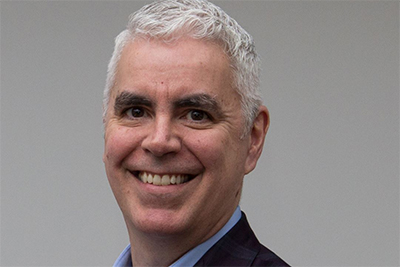
Assistant Vice-President, Research Strategy & Impact (Office of the Vice-President Research & Innovation), David Phipps, has an ambitious international mandate. He travels to the United Kingdom, the United States, Australia, New Zealand, Spain and Denmark to share his expertise in knowledge mobilization with a global audience ultimately creating an impact for York.
Phipps, who also heads up Research Impact Canada (RIC), sits down with “Brainstorm” to discuss this vital international effort.
“Our work is best described qualitatively, through reputational benefits. People are coming to us because of our reputation and leadership in this space.” – David Phipps
Q: Can you give us a glimpse of your calendar? What institutions outside of Canada invited you to speak or present in 2019 and 2020 to date?
A: In 2019, I was engaged by New Zealand’s Ministry of Education to serve on a committee to review how academic research is assessed. I was additionally retained by the Ministry of Health [same country] to help them implement their national health research strategy. I also did a workshop with KT Australia. As well, the Southern Danish University hosted a conference of the Danish Association of Research Managers and Administrators, to which I was invited. I also travelled to the University of Southern California, Division of Occupational Therapy. And the University of Deusto in Bilbao, Spain, asked me to do some workshops at a conference.
More recently, in February 2020, I visited six academic institutions in Melbourne, Australia that cost-shared to bring me over to work with them.
As well, RIC has a collaboration with a U.S. network called Advancing Research Impact for Society. We are always looking for opportunities to collaborate – the American and the Canadian networks.

Q: What kind of long-term relationships are you fostering with universities outside of Canada?
A: The way I view relationships with international organizations is that I learn when I go there, and I bring that knowledge back, so we can improve the work that we do locally, within our practices at York and in Canada.
“Our work, my collaborative work with an international university, is creating benefits – not just for York, not just for Canada, but for institutions around the world.” – David Phipps

Reciprocally, this work helps to raise awareness of York’s research and impact – so there’s a reputational benefit. As an example, I’m in an on-going collaboration with Julie Bayley, director of research impact development at the University of Lincoln in the U.K. We’ve been working together on research literacy since 2016. We’ve published in peer-reviewed academic literature. In addition, Emerald Publishing, a global academic publisher hosted in England, has picked up our work. It is now turning our work, and the tools we’ve developed in research impact literacy, into online tools and services to benefit researchers and research institutions around the world.
That’s a great example of how our work, how my collaborative work with an international university, is creating benefits – not just for York, not just for Canada, but for institutions around the world.
Q: In what areas are the universities looking for the most guidance?

A: There are three things I’m often asked to talk about: (1) How do you create impact? That is, planning for impacting grant applications. We’ve developed tools and workshops to help our researchers and their partners to co-create impact strategies for grant application; (2) How do you collect the evidence of impact? This includes how to communicate this evidence; and (3) How do we know that our research institute is ready to support impact? Here, the audience is comprised of academic leaders and senior research grant administrators.
Often, we assess the institution’s readiness to support impact by asking key questions, such as: What is the context in which you are working? What are the collaborations you’ve set up? What is the clarity of your communications? How are you co-producing?
Q: What kind of metrics underscore the value of this international work?
A: Our work is best described qualitatively, through reputational benefits. All the international institutions that I visited have invited me. These invitations are a measure of the reputation of both the work we’re doing at York and within RIC.

I’ll use a Canadian example: The U15 Provosts tasked the Canadian Association of Research Libraries to develop a scholarly communications road map with the aim of initiating conversations with key stakeholders about the challenges and opportunities in the current scholarly publishing landscape. The interest expressed by senior university administrators has been encouraging and suggests that a road map with clear markers for stimulating positive change in scholarly communications would be very helpful. One of their priorities on the road map was research impact – not bibliometrics, but impacts beyond research. Joy Kirchner, dean of libraries at York, was the chair of the project and one of the authors. In the course of the work she relayed to me that when this item was being discussed, she heard: “Let’s consult with York.” So, people are coming to us because of our reputation and leadership in this space.
To read RIC’s annual report, visit the website. To learn more about RIC, visit the website. To read about the impact of research, via Emerald Publishing, go here. For an example of a research paper by Phipps and Bayley, go here. To read Real Impact: Institutional Healthcheck Workbook (Emerald Publishing), visit the website.
To learn more about Research & Innovation at York, follow us at @YUResearch; watch our new animated video, which profiles current research strengths and areas of opportunity, such as Artificial Intelligence and Indigenous futurities; and see the snapshot infographic, a glimpse of the year’s successes.
By Megan Mueller, senior manager, Research Communications, Office of the Vice-President Research & Innovation, York University, muellerm@yorku.ca


